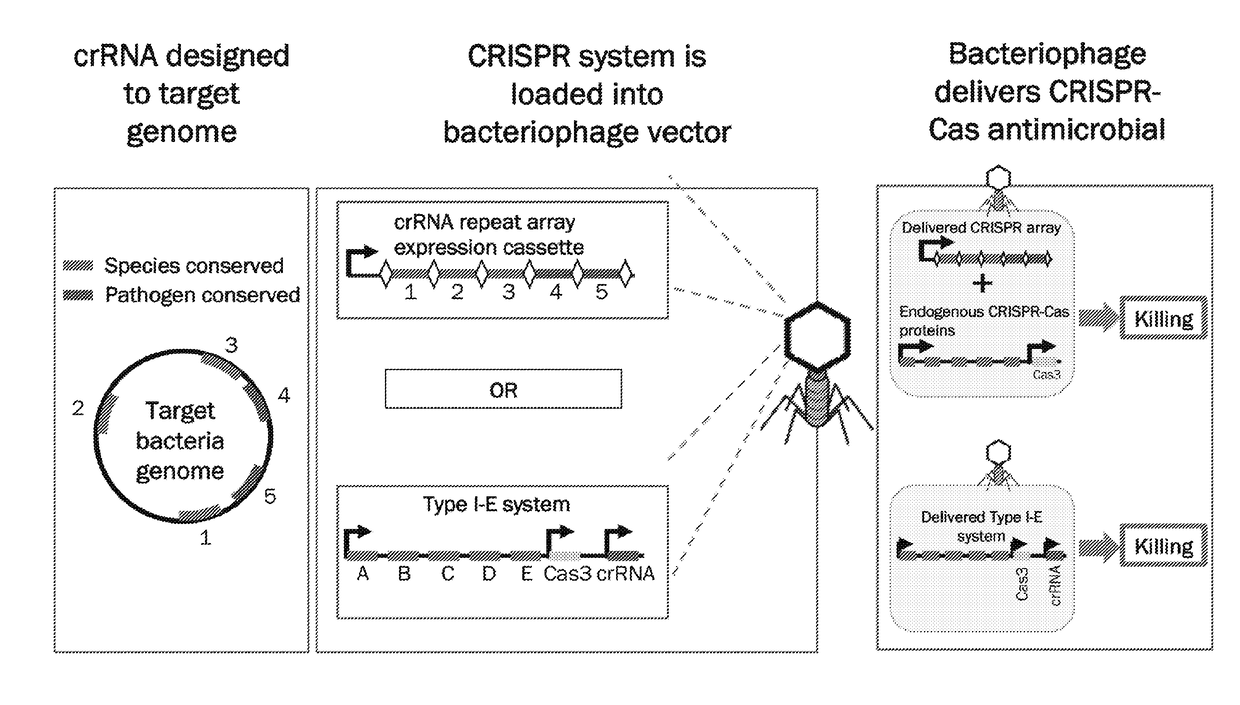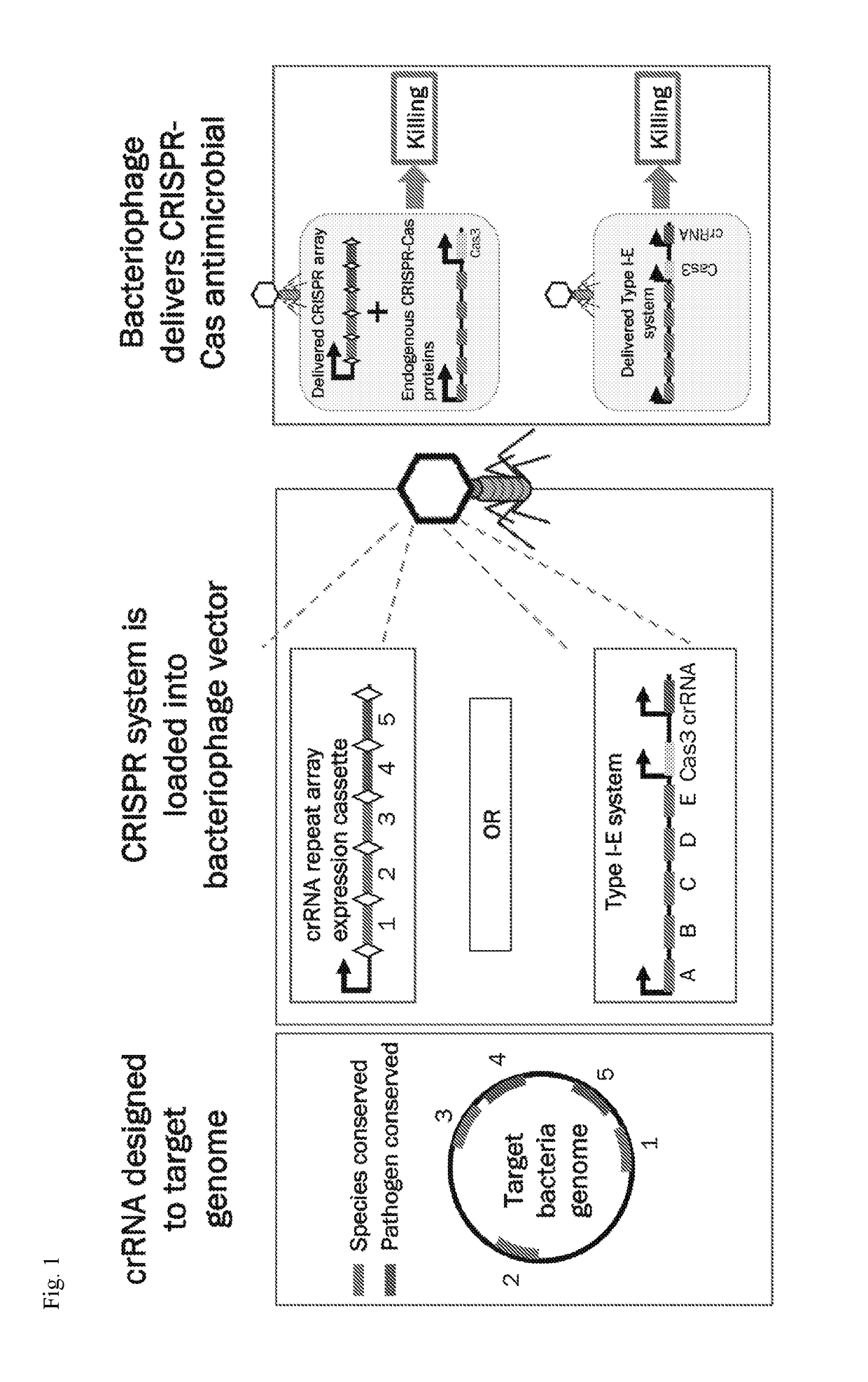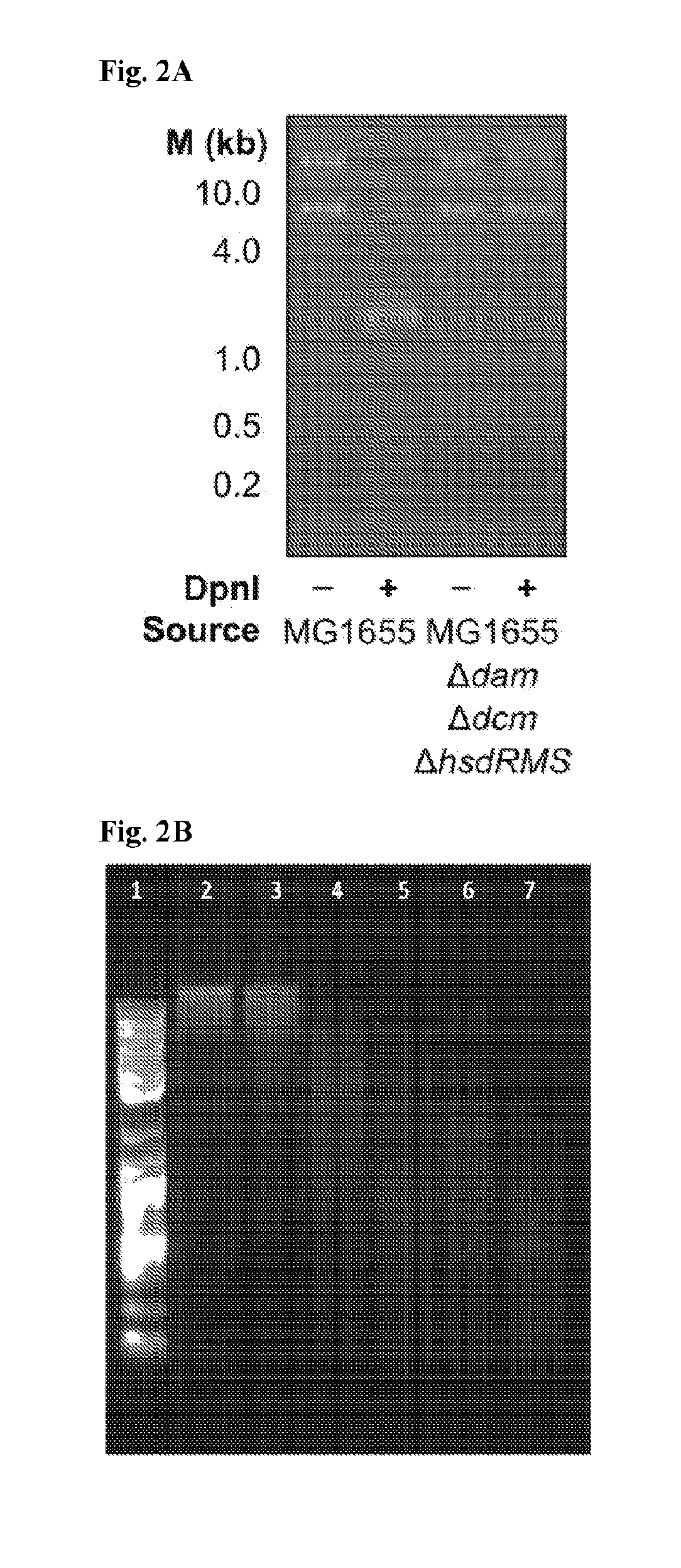Methods and compositions for efficient delivery of nucleic acids and rna-based antimicrobials
- Summary
- Abstract
- Description
- Claims
- Application Information
AI Technical Summary
Benefits of technology
Problems solved by technology
Method used
Image
Examples
example 1
ion of Methylation Activity of Host Bacteria and Methylation Pattern of Phage DNA
[0163]The methylation pattern of a host production strain, such as Escherichia coli MG1655 or Bacillus subtilis 168, is altered by deleting its endogenous restriction-modification systems and introducing heterologous methyltransferase genes. The restriction-modification genes are identified through means that are known in the art, such as through the online REBASE database (Roberts et al. Nucleic Acids Res 43:D298-D299. http: / / dx.doi.org / 10.1093 / nar / gku1046). These restriction-modification systems can be deleted using standard recombineering strategies known in the art. Once deleted, foreign methyltransferase genes are inserted into replicative plasmids or recombineered into the host genome under the control of a constitutive or inducible promoter. These genes are obtained directly from the target strain using the natural sequence or a sequence codon-optimized for the production host. Alternatively, het...
example 2
hage and Phagemid DNA Comprising CRISPR-Cas Systems for Selectively Killing Bacteria
[0171]P1 phage and the M13 phagemid are used to test the use of bacteriophage and phagemid DNA as carriers of CRISPR-Cas systems for the selective killing of bacteria. The P1 phage is a classic model of phage biology (Lobocka et al. J. Bacteriol. 186, 7032-7068 (2004)), and is commonly used to transduce pieces of genomic DNA (Ikeda & Tomizawa. J. Mol. Biol. 14, 85-109 (1965)). A phagemid has been developed for P1 (Westwater, Microbiol. Read. Engl. 148, 943-950 (2002) and has been used to deliver DNA to varying gram-negative bacteria and as a means to transduce large DNA libraries (Kittleson et al. ACS Synth. Biol. 1, 583-589 (2012); Kaiser & Dworkin, Science 187, 653-654 (1975). We currently have a strain with the wild-type P1 phage and a separate plasmid that inducibly expresses the coi gene. The P1 phage is lysogenic under normal growth conditions. Expression of the coi gene drives the phage into t...
example 3
ng Broad Host Bacteriophages for Multi-Species DNA Delivery and CRISPR Antimicrobials
[0220]CRISPR (Clustered Regularly Interspaced Short Palindromic Repeats) and their Cas (CRISPR associated) proteins have proven to be powerful agents for antimicrobials and potential replacements for broad-spectrum antibiotics (Gomaa, A. A. et al. MBio 5, e00928-913 (2014); Bikard, D. et al. Nature Biotechnology 32, 1146-1150 (2014); Citorik et al. Nat. Biotechnol. 32, 1141-1145 (2014)). These systems naturally function as RNA-guided immune systems in bacteria and archaea to recognize and cleave complementary genetic material (Brouns et al. Science 321, 960-964 (2008); Marraffini et al. Science (New York, N.Y.) 322, 1843-1845 (2008); Garneau. et al. Nature 468, 67-71 (2010); Edgar et al. J. Bacteria 192, 6291-6294 (2010); Manica et al. Mol. Microbia 80, 481-491 (2011)). Designing guide RNAs to target the bacterial genome can cause irreversible DNA damage at the target site, resulting in sequence-spe...
PUM
| Property | Measurement | Unit |
|---|---|---|
| Temperature | aaaaa | aaaaa |
| Fraction | aaaaa | aaaaa |
| Fraction | aaaaa | aaaaa |
Abstract
Description
Claims
Application Information
 Login to View More
Login to View More - R&D
- Intellectual Property
- Life Sciences
- Materials
- Tech Scout
- Unparalleled Data Quality
- Higher Quality Content
- 60% Fewer Hallucinations
Browse by: Latest US Patents, China's latest patents, Technical Efficacy Thesaurus, Application Domain, Technology Topic, Popular Technical Reports.
© 2025 PatSnap. All rights reserved.Legal|Privacy policy|Modern Slavery Act Transparency Statement|Sitemap|About US| Contact US: help@patsnap.com



